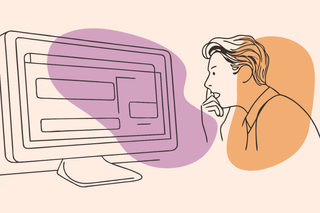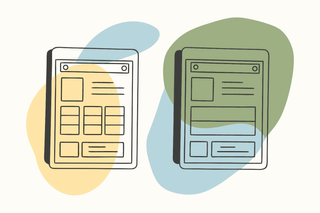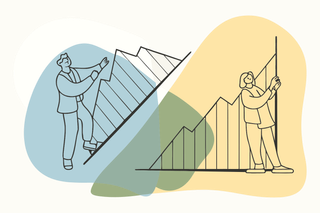Build Shopify Stores for Customers, Not Yourself #
You spent weeks perfecting your Shopify store. You chose the perfect theme, crafted compelling product descriptions, and created what you believe is your best online shop yet. But here's the uncomfortable truth: your e-commerce store isn't about you—it's about your shoppers.

Getting emotionally attached to your Shopify store design is one of the biggest conversion killers in e-commerce. When you build your store around your preferences instead of shopper behavior, you risk creating beautiful stores that don't sell products.
One of the most common mistakes in running an e-commerce business is getting stuck with your ego and thinking you know best. You need to accept that maybe you don't have the best taste, you don't have the best skills, and overall, maybe you don't know everything. Keep in mind that you're a business owner, not a designer—you need to trust data and professionals.
The solution? Let customer experience testing guide your Shopify store decisions instead of your personal preferences.
Store Attachment Kills Shopify Sales #
Store Owner Blindness #
When you invest time and money into your Shopify store, you naturally develop emotional attachment. This psychological phenomenon, known as the "endowment effect," makes you overvalue your own creation and become blind to its flaws.
For Shopify store owners, this translates to:
- Dismissing customer feedback that contradicts your vision
- Prioritizing aesthetics over sales functionality
- Making assumptions about shopper behavior based on your preferences
- Ignoring analytics that suggest your store design isn't converting
Professional Shopify CRO agencies see this pattern repeatedly: beautifully designed stores that fail to generate sales because they serve the store owner's preferences rather than the shopper's needs. During our agency history, we've met so many clients who refused to change their website design just because they didn't like the proposed changes—even after testing showed clear data supporting the changes. Some clients are ready to lose thousands of dollars just to protect their ego.
The Cost of Stubborn Store Design #
When you optimize your Shopify store for yourself instead of your customers, you pay a hefty price:
Lower Conversion Rates: Your favorite product layout might not make sense to shoppers. Your clever category names might confuse rather than guide.
Cart Abandonment: What feels intuitive to you (who knows every detail of your product catalog) might be a frustrating maze for first-time Shopify visitors.
Lost Sales: Every store design decision that doesn't align with shopper needs represents potential abandoned carts and lost revenue.
Wasted Ad Spend: When your Shopify store isn't optimized for customers, your marketing dollars bring visitors who leave without purchasing.
Shopify Stores Serve Shoppers, Not You #
Know Your E-commerce Shoppers #
The hardest lesson for Shopify store owners is accepting that you are not your typical customer. Your shopping preferences, browsing habits, and buying decisions likely differ significantly from your actual customers.
Consider these key differences:
Product Knowledge Gap: You know everything about your products. Your shoppers are discovering them for the first time and need clear information.
Shopping Motivation: You're passionate about your product catalog. Your customers are comparison shopping and need compelling reasons to choose you.
Browsing Patterns: You navigate your Shopify store effortlessly. Your customers get confused by complex navigation and abandon carts when frustrated.
Store Familiarity: You know where everything is in your store. Your customers need intuitive category structures and search functionality.
Shopify Store Owner Blind Spots #
Here are the most dangerous assumptions e-commerce store owners make:
"I shop like my customers": Even if you buy similar products, your familiarity with your own store makes you a biased shopper.
"If I like this layout, shoppers will too": Personal preference doesn't correlate with e-commerce performance. Product reviews and shopper behavior matter more than your aesthetic preferences.
"My investment makes it good": If you've invested money and time on the current website functionality, it doesn't mean it's good. In fact, it might have become worse. There's a golden rule: if you're not sure what to do, run an AB test.
"My products sell themselves": Even great products need clear descriptions, multiple images, and strategic presentation to convert browsers into buyers.
"My checkout process is simple": What seems straightforward to you might contain friction points that cause shoppers to abandon their carts.
Shopify AB Testing Breaks Deadlocks #
Let Your Shoppers Decide #
AB testing on your Shopify store removes emotion from store decisions. Instead of guessing what will sell better, you let real shoppers show you through their purchasing behavior.
This approach offers several e-commerce advantages:
Objective Decision Making: Shopper behavior doesn't have opinions or emotions. It simply shows you what drives purchases.
Continuous Sales Improvement: Even successful Shopify stores can increase revenue through iterative testing.
Risk Reduction: Instead of redesigning your entire store based on hunches, you test changes with actual customers before full implementation.
ROI Clarity: When you can measure the exact sales impact of each store change, marketing investments become more strategic.
Competitive Edge: Eventually, more strategic competitors who follow data rather than ego will swallow businesses that refuse to adapt. Many store owners are surprised when their ad budget gets burned with little return, never realizing their stubbornness was the cause.
Shopify Testing Priorities #

When you're not sure which elements to focus on, prioritize what directly impacts the purchase journey. The most valuable Shopify tests focus on the touchpoints that influence buying decisions—product pages, checkout flow, and pricing presentation. Rather than testing what you like, test what solves customer friction points.
Not all store elements have equal impact on sales. Prioritize your Shopify testing efforts:
High-Impact Elements (Test These First):
- Product page layouts and imagery
- Add-to-cart buttons and placement
- Checkout process and cart experience
- Shipping and return policy presentation
Medium-Impact Elements:
- Collection page organization
- Product recommendation placement
- Mobile shopping experience
- Search functionality and filters
Low-Impact Elements (Test When Others Are Optimized):
- Footer information and organization
- Blog content and presentation
- Minor color scheme adjustments
- Social proof placement
Working with Shopify development services can help you implement and track these tests to improve your store's performance.
Best Shopify Testing Times #
Conduct AB tests on your store in these situations:
Before Peak Selling Seasons: Optimize your store before Black Friday, holiday shopping, or your industry's high season.
When Sales Plateau: If your conversion rates have stagnated despite steady traffic, testing can identify improvement opportunities.
After Adding New Products: Test different ways of presenting new products to maximize their sales potential.
After Customer Complaints: When shoppers point out issues in reviews or support tickets, test solutions.
During Advertising Campaigns: Test landing pages and product displays when running paid traffic to maximize ad ROI.
Breaking Shopify Store Attachment #
E-commerce Action Steps #
Here are actionable steps to overcome emotional attachment to your Shopify store:
Start with Analytics, Not Opinions: Before making changes, examine your Shopify analytics to understand where customers are dropping off. When store decisions are based on shopper behavior rather than personal preference, your conversion rate improves.
Test Multiple Product Presentations: Create several different product page layouts with a tool like Shopify AB testing app. This prevents fixating on a single "perfect" product page and shows you what actually sells.
Collect Customer Feedback Systematically: Use post-purchase surveys and abandoned cart emails to gather insights. Shopify experts can help implement effective feedback collection.
Set Revenue Goals First: Define what success looks like in terms of sales metrics, not just store appearance. When your store is measured against clear revenue goals, personal attachment to specific designs diminishes.
Trust Professionals Over Your Gut: Recognize when to defer to experts. Our agency has repeatedly seen clients reject professional recommendations based on gut feelings, only to watch their conversion rates suffer while competitors flourished.
Shopify Success Story #
A boutique clothing store owner was convinced their artistic, minimalist product pages represented their brand perfectly. Despite their attachment to the clean design, their conversion rate was a disappointing 0.8%.
After reluctantly implementing AB testing on their Shopify store, they discovered:
- Shoppers spent more when product pages included detailed size guides and fabric information (which the owner thought made pages look "too busy")
- Cart completion increased 26% when they added trust badges and simplified the checkout process (which they initially resisted as "unnecessary")
- Adding customer photos increased product conversion by 34% (despite the owner's concern that it would "cheapen" their brand aesthetic)
By letting go of their attachment to their original Shopify vision and embracing data from actual shoppers, they created a store that balanced brand aesthetics with sales functionality. Their conversion rate doubled to 1.6% within three months, significantly increasing their monthly revenue.
Create a Shopify Testing Culture #
Overcome E-commerce Assumptions #
Introducing structured testing often meets resistance from store owners attached to their vision. Here's how to embrace customer-focused thinking:
Start With Quick Wins: Begin with simple Shopify tests on high-traffic pages that demonstrate immediate sales improvements.
Track Revenue Impact: Measure and celebrate the additional revenue generated from each successful test.
Study Competitor Stores: Analyze what successful competitors in your niche are doing differently on their Shopify stores.
Make Incremental Changes: Instead of complete overhauls, make smaller, measurable adjustments to build confidence in the testing process.
Sustainable Shopify Optimization #
Successful e-commerce optimization requires systematic approaches:
Document All Tests: Keep detailed records of each Shopify test, including hypotheses, changes made, and revenue impact.
Align With Marketing Calendar: Schedule tests around your promotional calendar to maximize learnings during high-traffic periods.
Set Clear Revenue Goals: Define specific sales targets for each test before implementation to measure success objectively.
Leverage Shopify Experts: Consider working with specialists who understand both technical implementation and e-commerce psychology.
Many Shopify agencies offer comprehensive CRO services that include AB testing infrastructure and ongoing revenue optimization.
Let Shoppers Decide #
Your Shopify store exists to sell products, not to showcase your design preferences. When you let go of emotional attachment and embrace customer-driven decision-making, you create an e-commerce experience that converts browsers into buyers.

Remember: your business success depends on setting aside your ego. We've seen too many store owners refuse to change their designs despite clear evidence from testing, ultimately losing thousands in revenue while competitors who embraced data-driven decisions thrived.
AB testing provides the framework for this sales-centric approach. By systematically testing different Shopify store elements and letting customer purchasing behavior guide your decisions, you build an online store that not only looks good but also generates more revenue.
Remember: The best Shopify store is the one that sells the most products.
Ready to break free from store attachment and let shopper behavior guide your decisions? Contact our team for a comprehensive Shopify CRO audit and testing strategy tailored to your e-commerce business.
Looking for more insights on optimizing your Shopify store? Explore our guides on maximizing average order value and implementing sitewide AB tests in Shopify.
Shopify for $1/month + Earn 1% of all sales as subscription credits, up to $10,000.
Glossary Terms in This Article:
- Abandonment: Abandonment is when users leave a store without buying.
- Analytics: Analytics tracks website performance, traffic, and conversions.
- Cart: A cart holds items for purchase in Shopify before checkout.
- Checkout: Checkout is the process of completing a purchase in Shopify.
- Collection: A Shopify Collection groups products for easy browsing.
- CRO: CRO increases user conversions to maximize traffic ROI.
Frequently Asked Questions
Quick Answers for Customer-First Shopify
- Why do store owners get attached to their Shopify store design?
- Store owners invest significant time and money into their Shopify stores, creating emotional attachment. However, successful e-commerce conversion requires putting shopper needs above personal preferences.
- How do I know if my store design preferences are hurting sales?
- Run AB tests to compare your preferred Shopify design against customer-focused alternatives. Let shopper behavior, not opinions, guide your decisions.
- What should I test when I'm unsure about Shopify store decisions?
- Start with high-impact elements like product pages, checkout flow, and navigation. Shopify CRO audits can help identify the most important testing opportunities.
- How can I build a customer-focused approach for my Shopify store?
- Implement regular Shopify AB testing, celebrate sales improvements, and learn to prioritize shopper feedback over personal preferences.